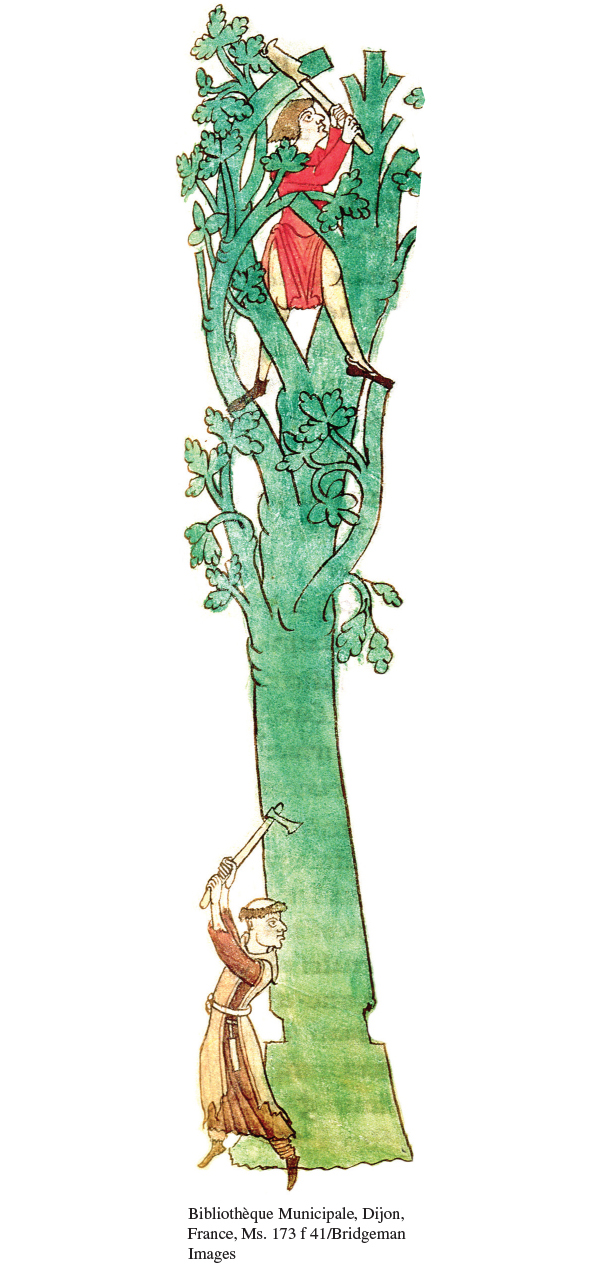Monastic Revival
In the early Middle Ages many religious houses followed the Benedictine Rule, while others developed their own patterns (see Chapter 7). In the High Middle Ages this diversity became more formalized, and religious orders, groups of monastic houses following a particular rule, were established. Historians term the foundation, strengthening, and reform of religious orders in the High Middle Ages the “monastic revival.”
In Carolingian times, the best Benedictine monasteries had been centers of learning, copying and preserving manuscripts, maintaining schools, and setting high standards of monastic observance. In the period of political disorder that followed the disintegration of the Carolingian Empire, many religious houses fell under the control and domination of local lords. Powerful laymen appointed themselves or their relatives as abbots, took the lands and goods of monasteries, and seized monastic revenues. Accordingly, the level of spiritual observance and intellectual activity in monasteries and convents declined. The local lords also compelled abbots from time to time to provide contingents of soldiers, an obligation stemming from the abbots’ judicial authority over knights and peasants on monastic lands. The conflict between an abbot’s religious duties on the one hand and his judicial and military obligations on the other posed a serious dilemma.

The first sign of reform came in 909, when William the Pious, duke of Aquitaine, established the abbey of Cluny in Burgundy. Duke William declared that the monastery was to be free from any feudal responsibilities to him or any other lord, its members subordinate only to the pope. The monastery at Cluny, which initially held high standards of religious behavior, came to exert vast religious influence. In the eleventh century Cluny was fortunate in having a series of highly able abbots who ruled for a long time. In a disorderly world, Cluny gradually came to represent stability. Therefore, laypersons placed lands under its custody and monastic priories under its jurisdiction (a priory is a religious house, with generally fewer residents than an abbey, governed by a prior or prioress). In this way, hundreds of religious houses, primarily in France and Spain, came under Cluny’s authority.
Deeply impressed laypeople showered gifts on monasteries with good reputations, such as Cluny and its many daughter houses. But as the monasteries became richer, the lifestyle of the monks grew increasingly luxurious. Monastic observance and spiritual fervor declined. Soon fresh demands for reform were heard, resulting in the founding of new religious orders in the late eleventh and early twelfth centuries.
270
The Cistercians (sihs-